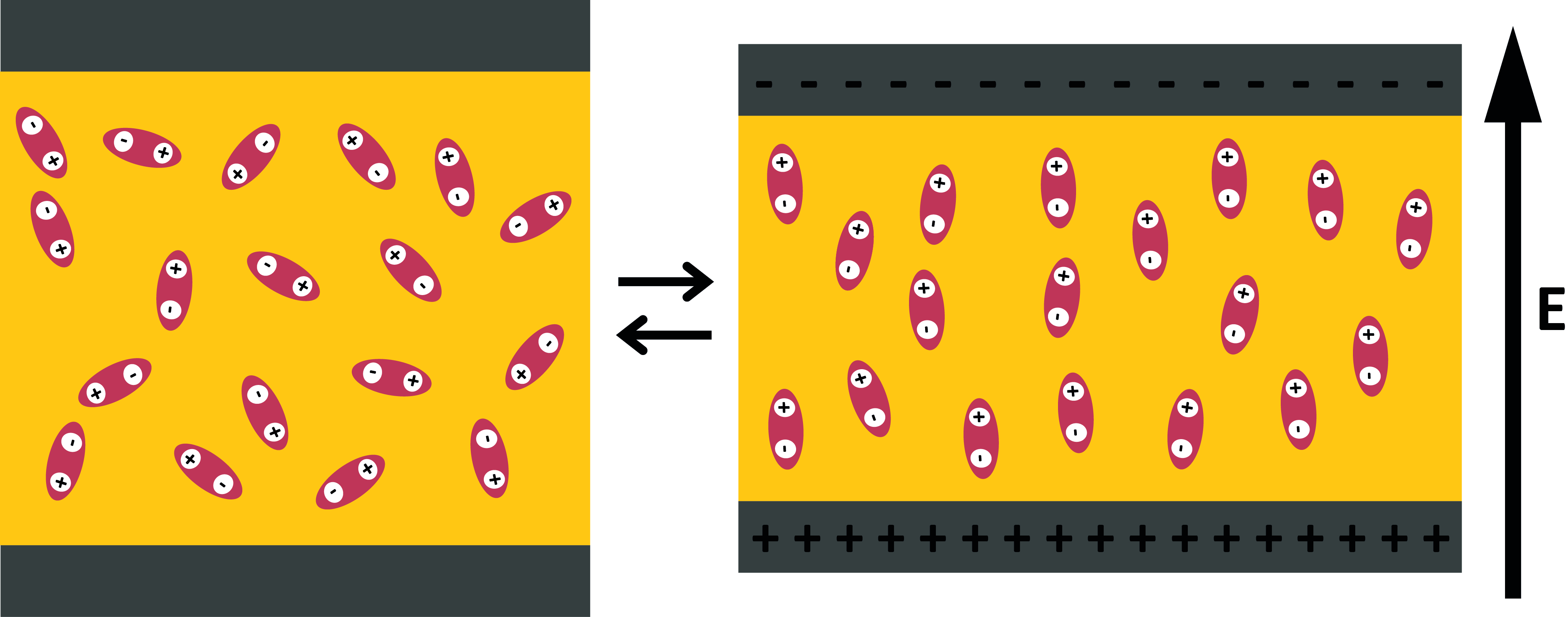Synthesis of elastomers with high dielectric permittivity
The research efforts towards elastomers with high dielectric permittivity (ε’) intensified significantly in the last years since such materials would allow the construction of dielectric elastomer actuators (DEA) with low operation voltages. We introduced polar groups such nitrile (CN) and trifluoropropyl (CF3) to the polysiloxane chains which were thereafter cross-linked to thin elastic films. These polysiloxanes have Tgs well below room temperature (<-50 °C). This ensures that the materials turned into true elastomers after cross-linking. We have found a linear increase in ε’ with increasing content of polar groups with maximum values of ε’ = 18 and ε’ = 8.8 for polysiloxanes modified at every repeating unit with either CN or CF3 groups, respectively.

Figure: Orientation of randomly aligned dipoles of a polar elastomer in an electric field.
References:
S. J. Dünki, et al., Adv. Funct. Mater., 2015, 25, 2467-2475; M. Dascalu, et al., RSC Advances, 2015, 5, 104516-104523; S. J. Dünki, et al. RSC Advances, 2015, 5, 50054-50062.
Project co-financed by a grant from Switzerland through the Swiss Contribution to the enlarged Euro-pean Union
-
Share
